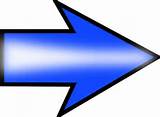|
- 50
-
In
John Thomas and Lady Jane, Lawrence made Jack Strangeways
a substantial figure. However, he downgraded his characterisation
in the revised text. One cannot but speculate that Lawrence
wanted, for reasons best-known to himself, to "water
down" his original depiction of Strangeways in the
text that he knew was going to be published.
In John Thomas and Lady Jane, Jack Strangeways is
35 (Scott was 34 in 1922).
Strangeways is "a lady's man" - the precise words
used by many to describe Scott. In Kangaroo, Lawrence
portrays Scott as being attractive to women (though he ascribes
this characteristic to "Jaz", by way of disguise,
or perhaps for prudence's sake):
| I
believe he'd make any woman like him, if he laid
himself out to do it. Got that quiet way with him,
you know, and a sly sort of touch-the-harp-gently,
that's what they like on the quiet. |
Strangeways' good looks, however, are fading (Scott was
going bald).
Connie Chatterley did not think Strangeways was "a
good-looking boy" any more, rather he was "flat-faced
and a little insipid. And his posterior was too large...[he
was] a bit too fat and vapid". (In reality, it was
Scott's ears that were large.)
Strangeways has a particular technique with women..."he
loved to get some sympathetic woman into a corner...his
blue eyes would get wider and wider, his low secret voice
hotter and hotter, as he talked about himself".
Lawrence invests Strangeways with some of Scott's interests
- and indeed, his strange ways.
Both are interested in military matters (Scott's lifelong
obsession). Both have a pet subject - in Scott's and Callcott's
case Japan (Scott was an expert on Japan, and later reported
Japan's military invasion of Manchuria for the Sydney
Morning Herald), but in Strangeways' case (of all things)
"Spanish architecture".
(One can see where Lawrence might have got architecture
- Rosenthal was an architect. It is tempting to think that
the Spanish ingredient might have come from GD Hum's "Spanish
persona" - he had spent some time in South America,
and had named his Sydney house "Casita".)
However, it is in two other respects where the similarities
between Scott and Strangeways are inescapable.
The JTLJ Jack
Strangeways seems to be involved in some sort of anti-socialist
activity. At a Christmas party, Connie's crippled husband
Clifford puts forward the notion that there should be a
"small and ruthless armed aristocracy" ready to
combat rampant socialism.
But Strangeways wants something more vigorous than that:
| "My
God, if we ever get a revolution here in England,
how I should love to charge the rabble with machine-guns". |
Connie suggests
that, come the revolution, it might be the socialists who
have the machine-guns. Strangeways would have none of it...
| "That's
just what we don't intend it to be." |
(We?
- and who might "we" be? No doubt Clifford Chatterley's
"small and ruthless armed aristocracy".)
The Christmas party conversation turns from controlling
the rabble to a future world in which some women were
mere "breeders". The question is asked what
role the men might have in such a world.
"I
think I might apply for a job as a breeder,"
said Jack.
"Where
are your testimonials?" cried Olive [Jack's
wife] contemptuously (she had no children).
"Testi-monials!"
said [one of the other men present].
|
Jack Strangeways, like Jack Callcott's mate Fred Wilmott
in Kangaroo, and Jack Scott in real life, "can't
get his pecker up". (An inadequacy that Lawrence
subsequently transferred to the unfortunate Clifford Chatterley,
who bears a striking similarity to Jack Scott in more
ways than one.)
In the second Lady Chatterley, Lawrence not only
put the knife in, but twisted it.

|
|